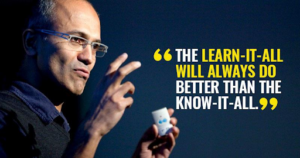What do Oldsmobile and Pan Am have in common?
They fell victim to the deceptive decline trap—appearing stable while decay was quietly setting in.
Leaders often think they’ll see the decline coming and have plenty of time to react, but it rarely works that way.
Decline starts slowly and then falls off a cliff, with only 10% of market leaders ever making a full comeback.
The antidote? Don’t wait for a crisis.
Keep your eyes open for subtle shifts in your business and the market, and then disrupt yourself before decline catches you off guard.
Originality is the antidote.

Falling into the Deceptive Decline Trap often means slipping into imitation mode, repeating what’s already out there.
But the real solution is to tap into originality.
Just like an authentic Picasso is priceless compared to a cheap replica, businesses that create net-new value outshine those that merely copy.
Paul McCartney built his billion-dollar empire through original work, while cover bands perform for pocket change.
To beat decline, challenge yourself to create, innovate, and stand out. Originality isn’t just a nice-to-have; it’s your safeguard against stagnation.
Microsoft’s Comeback

Back in 2014, Microsoft was slipping into the Deceptive Decline Trap—clinging to its past while losing its edge.
Then Satya Nadella took the reins as CEO.
His radical strategy was about more than fixing products; he redefined Microsoft’s mission.
He shifted the culture from “know-it-all” to “learn-it-all” and pivoted to cloud computing, reigniting the company’s growth.
Microsoft’s resurgence – growing enterprise value from $300 billion to over $3 trillion in just ten years – is proof that to escape the decline trap, we need more than tweaks—we need a mindset shift.
A shift from protectionism to possibility. Reinvention isn’t just a solution—it’s a way of being.
Start with an empty cup.

Forget the glass-half-full versus half-empty debate—what if the problem is that your cup is too full?
Leaders often cling to old ideas, leaving no room for fresh thinking.
Phrases like “We’ve always done it this way” signal that your cup is overflowing. Open-mindedness and curiosity fuel innovation.
By intentionally emptying your cup, you make space for new ideas and prevent the deceptive decline trap from sneaking in.
Implement this approach in your business today.
An empty cup isn’t a sign of emptiness—it’s a sign you’re ready to fill it with fresh possibilities that keep you ahead.
To your creative success…

PS: Want to share this issue of Find A Way? Just copy and paste the link or forward the email version. Did someone share this with you? Subscribe here to get your own copy delivered straight to your inbox every Monday.
About Josh
Josh Linkner is a New York Times bestselling author, serial entrepreneur, venture capital investor, professional jazz guitarist, and a globally recognized innovation expert. To learn more or to explore a collaboration, visit JoshLinkner.com
